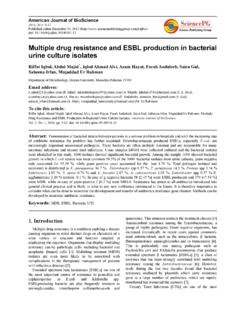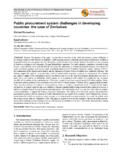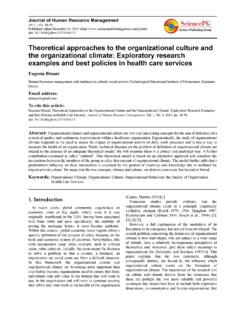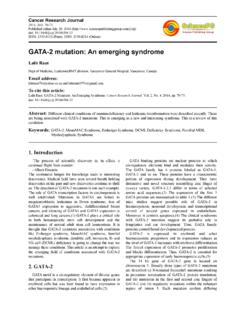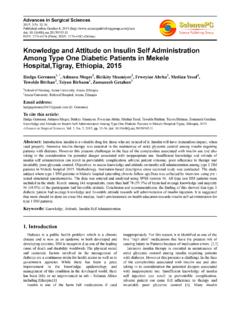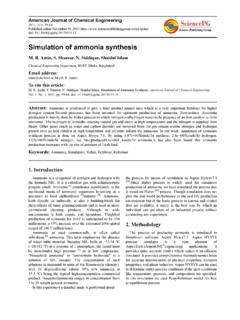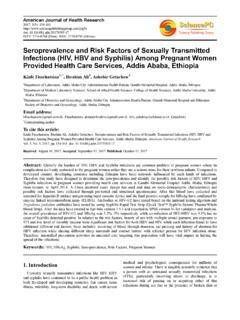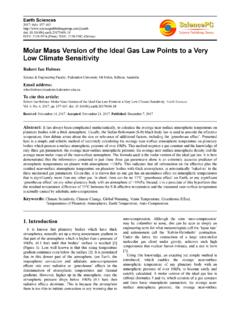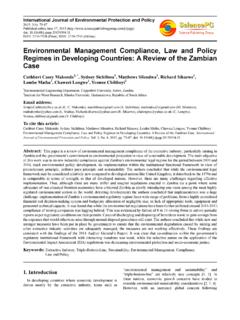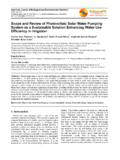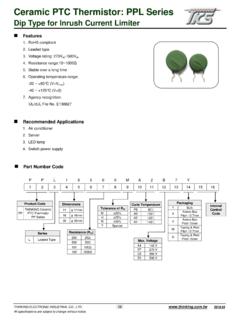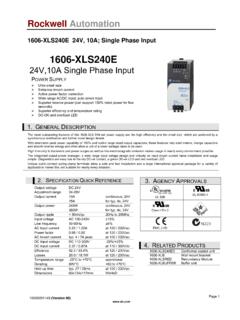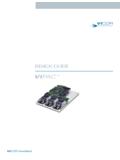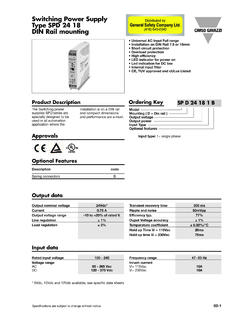Transcription of Transformer inrush current mitigation using …
1 International Journal of Energy and Power Engineering 2013; 2(2) : 46-53 Published online April 2, 2013 ( ) doi: Transformer inrush current mitigation using controlled switching and magnetic flux shunts S. Jamali Arand1, M. Saeedi1, S. Masoudi2 1 Islamic Azad University, Dehdasht Branch, Dehdasht, Iran 2 Young Researchers and Elites Club, Dehdasht Branch, Islamic Azad University, Dehdasht, Iran Email address: (S. Jamali Arand) , (M. Saeedi), (S. Masoudi) To cite this article: S. Jamali Arand, M. Saeedi, S. Masoudi. Transformer inrush current mitigation using Controlled Switching and Magnetic Flux Shunts. International Journal of Energy and Power Engineering. Vol. 2, No. 2, 2013, pp. 46-53. doi: Abstract: The inrush current is a transient current that results from a sudden change in the exciting voltage across a Transformer s windings.
2 It may cause inadvertent operation of the protective relay system and necessitate strengthening of the Transformer s mechanical structure. Many methods were reported in the literatures for reduction and mitigation of trans-former inrush currents. This paper represents a study of techniques that have been proposed for Transformer inrush current mitigation . A new, simple and low cost technique to reduce inrush currents caused by Transformer energization is presented here. In this method, a controlled switching approach with a grounding resistor connected to Transformer neutral point and a magnetic flux shunt is used. By energizing each phase of the Transformer in sequence, the neutral resistor behaves as a se-ries-inserted resistor and thereby significantly reduces the inrush currents.
3 The dimensions of the magnetic flux shunts are chosen such that the inrush current amplitude is further reduced. The proposed method has been tested by computer simula-tion using 2-D FEM (two-dimensional finite element method) by Maxwell software. The obtained results show that the proposed method is efficient in reduction of Transformer inrush current and is much less expensive since there is only one resistor involved and the resistor carries only a small neutral current in steady-state. Keywords: Transformer , inrush current mitigation , FEM, Modeling, Magnetic Flux Shunts 1. Introduction transformers are one of the most important components in power systems. Security and stability of transformers are both important and necessary to system operation. The steady-state magnetizing currents of Transformer may be one to five percent of the rated current , but anytime the excita-tion voltage applied to a Transformer is changed, a magne-tizing inrush current flows whose first peak may reach sev-eral times as large as the rated current .
4 Although magnetiz-ing inrush is typically considered to occur when a de-energized Transformer is energized, magnetizing inrush can also flow after system voltage dips and during post fault voltage recovery. Such inrush currents may last from tens of milliseconds to tens of seconds before the steady-state con-dition is reached. The decay time of the inrush current is dependent on the time constant of the system. The inrush current is asymmetric and unbalanced among the phases and may place a heavy stress on the network and the Transformer itself. The mechanical forces within the Transformer windings can have similar increases in ampli-tudes as those in short circuits but with longer duration time [1-3]. The inrush current of transformers often causes the in-advertent operation of the circuit s over- current and diffe-rential protection systems [4], [5].
5 The Transformer inrush currents can have large magni-tudes and rich harmonics, which can result in power system problems such as damage and decreased life expectancy of the Transformer due to switching overvoltage [6]. The overvoltage resulting from the inrush current could happen and cause serious damage to power apparatus [7-8]. Considering these issues, it is important to suppress the inrush current in transformers . A method that uses a groun-ding resistor connected to a Transformer neutral point to reduce inrush currents caused by Transformer energization is proposed in [9]. By energizing each phase of the Transformer in sequence, the neutral resistor behaves as a series-inserted resistor and thereby significantly reduces the energization inrush currents.
6 The inrush current is mitigated using appropriate asym-metric winding configurations in Transformer design that International Journal of Energy and Power Engineering 2013, 2(2) : 46-53 47 differ from traditional symmetric winding structure, can provide the high inrush equivalent inductance and suitable leakage inductance for a Transformer with changing the cross-sectional area of the primary winding [10]. In [11], the superconducting fault current limiter (SFCL) is applied to reduce the inrush current . The large cur-rent-limiting resistance (CLR) of the SFCL can help reduce the inrush current and the large CLR causes a significant voltage drop in the SFCL. The optimal insertion resistance of the SFCL to reduce the inrush current is decided and the effectiveness of the suggested scheme is demonstrated using the EMTP software.
7 In [12] a simplified approach to minimize the inrush current is achieved via a systematic switching study of the energization of a distribution Transformer . A method for the visualization of the inrush current s first peak is also pro-posed and a mitigation scheme based on a consistent condi-tion of minimum inrush current as a function of the switching in and out times as well as practical implementa-tion issues and benefits of this method is investigated. An approach for reducing the inrush current of a power Transformer based on increasing the inrush equivalent in-ductance by changing the distribution of the winding coils with only a slight change in the design is presented in [13]. Moreover, the inrush equivalent inductance is analyzed with respect to the structural parameters of the Transformer .
8 It was shown that a small neutral resistor size of less than ten times the Transformer series saturation reactance can achieve 80 90% reduction in inrush currents among the three phases [14]. It was also found that the first phase energization leads to the highest inrush current among the three phases and, as a result, the resistor can be sized ac-cording to its effect on the first phase energization. The rise of neutral voltage is addressed as the main limitation of the proposed scheme and the use of surge arrester is proposed to overcome the limitation. The optimum instant for unloaded Transformer energizing with residual flux taken into account is when the prospective and residual flux is equal. Simulations and experimental results confirmed the capability of controlled switching to eliminate inrush transients on unloaded transformers with-out cores saturation [15].
9 Energization of the Transformer from the delta side of a delta-star Transformer does not allow the control of neutral resistor at the time of switching the supply for reducing the inrush current . The simulation studies on the inrush current produced by the delta side energization of delta-star trans-former with additional resistors connected in series with the line are reported in [16]. Optimum resistance value is de-cided to get a quick decay of inrush current , low voltage drop and losses before it is shorted. Three resistors in series with 3 phases need a circuit breaker having 6 contacts. But controlled switching of one winding with resistor switching of only one line also reduces inrush current and needs a circuit breaker having 4 contacts.
10 When voltage sags happen, the transformers , which are often installed in front of critical loads for electrical isolation, are exposed to the disfigured voltages and a dc offset will occur in its flux linkage. When the compensator restores the load voltage, the flux linkage will be driven to the level of magnetic saturation and severe inrush current occurs. In [17] the inrush issue of loaded transformers under the operation of the sag compensator is presented and an inrush current mitigation technique based on the flux linkage close-loop control has been proposed for the sag compensator system. The point on wave control is designed to energize the Transformer at the optimal point on the voltage waveform, and its intention is to reduce Transformer transient inrush at the time of energization.
